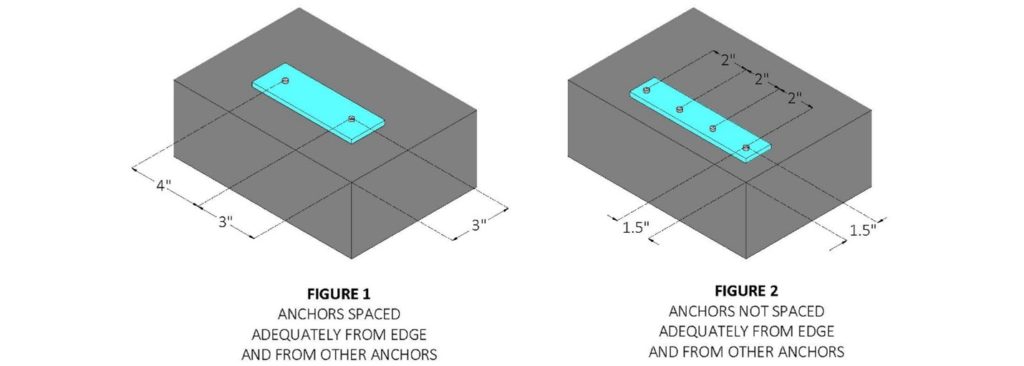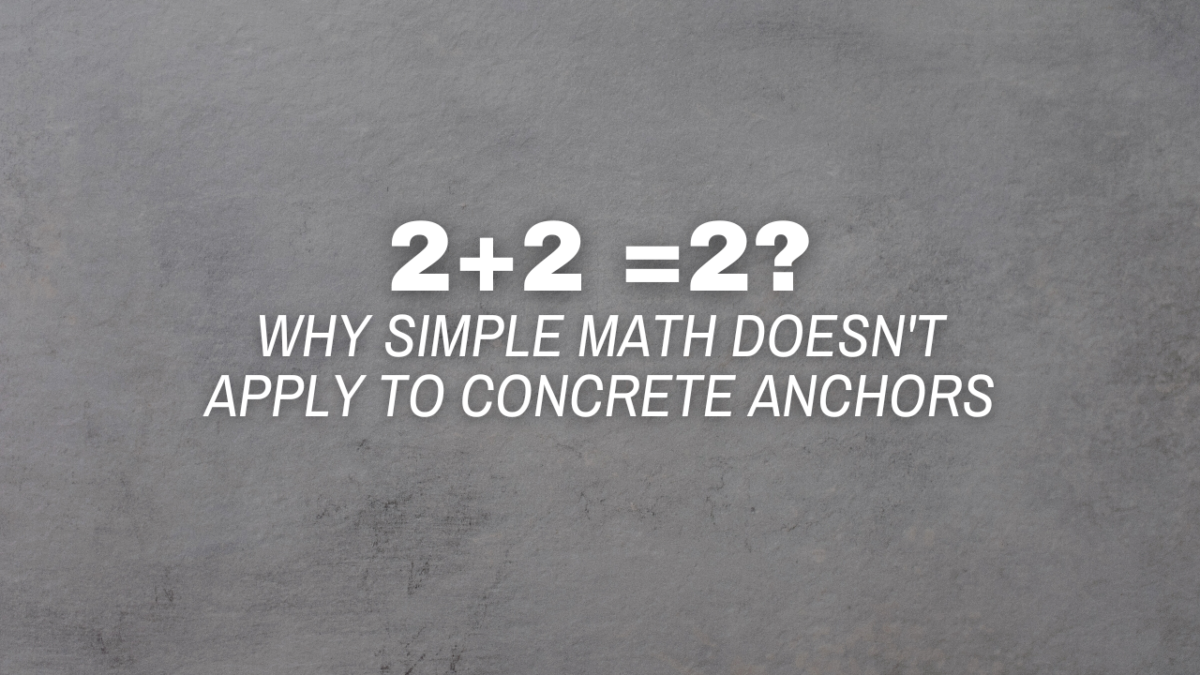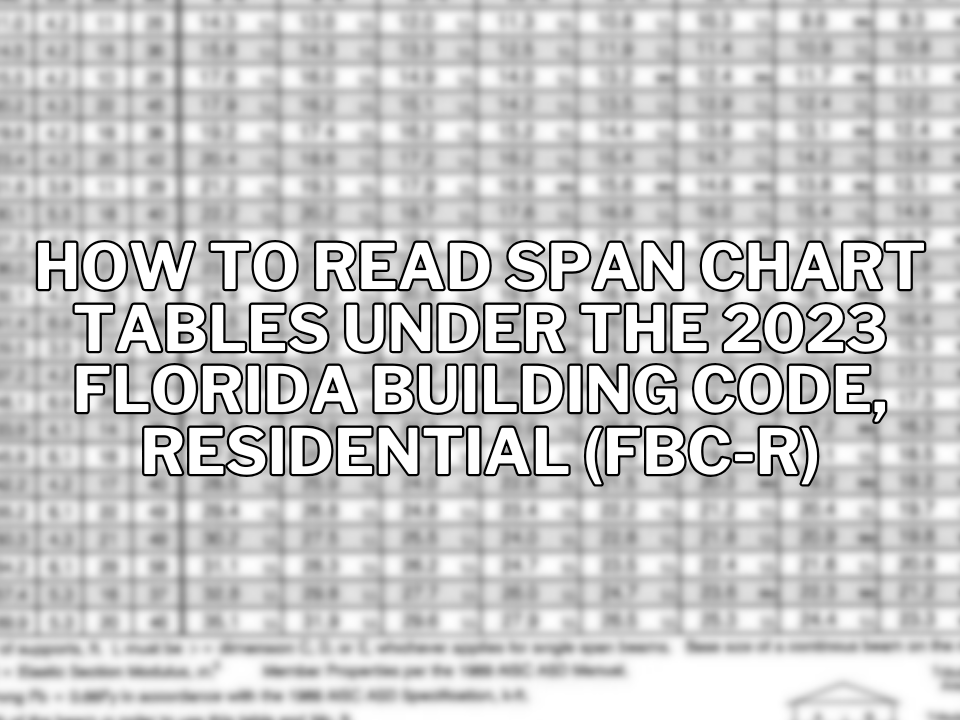Does 2 + 2 = 2?
Let’s compare the following two concrete base connections using ¼” Red Head Tapcons®.
At first glance, it might seem intuitive that the second connection is stronger, because it has more
fasteners.
However, with concrete anchors, a big consideration while determining the strength of anchors is the
spacing and edge distance.

In general, if an anchor is installed too close to another anchor, their cones of influence overlap, causing the concrete in the overlapped region to be more susceptible to failure (See Figure 3 below). Similarly, if an anchor is installed too close to the edge of concrete, it’s cone of influence is intercepted by the edge and hence it cannot develop its complete strength (See Figure 4 below).
These strength reductions are usually represented in the form of load reduction factors, which are specified by the manufacturer.
A quick calculation might suffice to compare the two connections shown above.

| Shear value of (1) ¼” Red Head Tapcons® = 1670 Lbs. | (2) Tapcons® installed at a 3” edge distance and 4” spacing | (4) Tapcons® installed at a 1.5” edge distance and 2” spacing |
| Load reduction factor for spacing | 1 | 0.82 |
| Load reduction factor for edge distance | 1 | 0.59 |
| Strength of connection | 2 X 1670 Lbs. X 1 X 1 = 3340 Lbs. | 4 X 1670 Lbs. X 0.82 X 0.59 = 3232 Lbs. |
So, as it turns out, a (4) Tapcon® connection is weaker than a (2) Tapcon® connection in this case.
As a general rule of thumb, for a concrete screw anchor should be installed at a spacing and edge distance of 16 times it’s diameter for full capacity, and never less than 8 times it’s diameter for reduced capacity.
At Florida Engineering LLC, we specialize in metal building design, along with foundation plans and anchor layout plans. Please contact orders@fleng.com for a quote.
REFERENCES
- ACI 318-14: Building Code Requirements for Structural Concrete
- RED HEAD Tapcon® Screw Anchor – Technical Data








